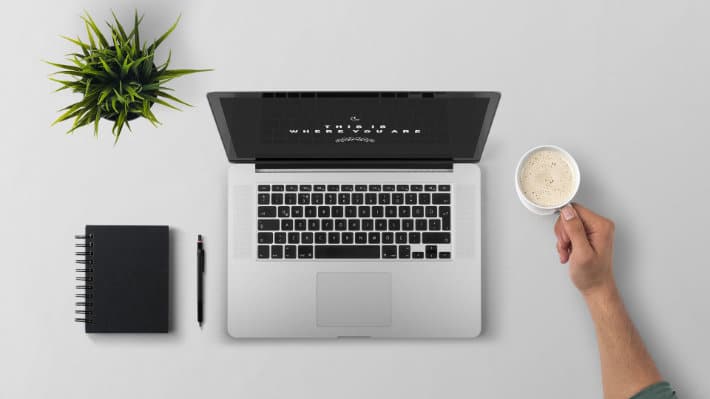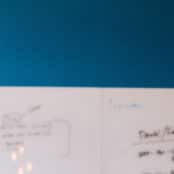
Freelancing and small creative businesses are on the rise. In 2014, the Bureau of Labor Statistics found that one in seven web designers is self-employed. But how do you know if that path is right for you?
Here are five signs you’re ready to start your own studio, with tips along the way if you still need to develop the groundwork for running your own business.
You’ve developed professional connections outside your workplace
If you have a full-time job designing or developing websites, you may be able to count on your employer for contract work after you start working for yourself. However, don’t rely on a single client to support your business.
When you rely on a single client, you risk losing all your income. If that client no longer needs your work, you have to start from scratch building new relationships with potential clients, which can take awhile. On the other hand, you don’t want to be juggling too many clients either.
When you’re starting a new studio, ideally, line up two or three clients before you leave your full-time job (if you have a choice). Your goal is to have a few different income sources but not so many clients to juggle that you have trouble keeping up with your workload and building a good reputation.
“The best client relationships come from networking. ” And that’s where your professional connections can help. People who know you and your work can feel comfortable hiring you for a project or recommending you to others. If your professional network is mostly your coworkers at your full-time job, here are some ways you can expand your network:
- Join a professional organization, such as AIGA.
- Attend networking events in your area, such as Creative Mornings.
- Look for groups of like-minded web designers on MeetUp.com.
You’ve tried freelancing on the side and loved it
Speaking of professional connections, if your colleagues have asked whether you’re available for freelance work, that’s a sign you’ve been building a good reputation as a designer. While you have a full-time job, taking a small freelance job is a great way to test the waters. You learn how it feels to:
- Scope out the details of a project.
- Negotiate your rate for the work.
- Work odd hours at your dining room table (or home office, if you’re lucky).
- Manage a client relationship, making sure that you’re delivering what the client needs.
- Invoice for all your hard work.
- Deposit the check! (And set aside about a third of that money for taxes.)
To land your first project, tell people in your network that you’re looking for freelance projects. You can also find work through job boards and by networking on Behance and Dribbble.
If you already have a full-time job, make sure you keep your freelance projects small so that you can balance your full-time job and freelance work without falling behind on either one. Maybe design a website for a small organization that you care about or for a friend’s small business.
You’re itching for professional freedom
A full-time job at an established company can be a wonderful start to a career. You learn how to work with teams throughout the company to deliver a website. You can learn from your coworkers about how to handle design problems, deadlines, difficult clients, and so much more.
But as the years go by, working for someone else might feel like it’s holding you back. You might have ideas that you want to try but have trouble getting support for those ideas from your employer. Or perhaps the company is risk-averse, so you don’t have opportunities to grow your design skills with emerging styles or techniques.
When you work for yourself, you can choose projects that will help you grow or expand your skills.
New business owners don’t often have the good fortune of finding someone willing to take a chance on their ideas and skill set. If that’s your situation, you might need to lay the groundwork. Here are a few ways to start:
- Research the people or companies doing the type of design work that interests you. Someone in your network may be willing to do an informational interview about they got started with a particular type of web design and how they’ve been able to cultivate that business.
- Practice the skills you want to learn and include an example in your online portfolio. The example shows you have the basic web development skills needed to take on such a project as a paid professional.
You have a financial safety net
When you work for yourself, you need a bigger savings account than someone who has a full-time steady job with a regular paycheck. If you can, have at least six months to a year’s worth of expenses saved as your financial safety net. Here’s why:
- You don’t get paid until you complete the work. Even small projects take time to get off the ground. After you submit the work, you may need to wait for your client to review your design work. You can easily work on a project over the course of a month or longer before you reach a point where you can invoice for part or all of your payment.
- After you complete the work, you still have to wait for the company to process your invoice and send you a check. Generally speaking, the bigger the company, the longer the company takes to remit a check. Smaller clients might pay you within a week or two, but bigger companies have accounts payable departments that can take 30-60 days to process your invoice. In the latter case, three or four months may go by from the time you agreed to do the project to the time you receive a check. Your financial cushion gives you the peace of mind that you can pay for food, Internet service, and whatever else you need to survive during a lull in payments.
- Projects move around all the time. For a million different reasons, client projects are delayed. These delays mean that you can’t complete the work. And that means you have to wait (even longer) to get paid.
- The financial security enables you to say no. If you don’t know how you’re going to pay your bills, you’re more inclined to take work that doesn’t interest you or that doesn’t pay enough. However, when you have an adequate financial cushion, you can turn down dud projects and give yourself time to pursue the work you really want. Also, the financial cushion frees you to walk away from difficult clients.
The upshot: Financial flexibility enables you to interact with your client professionally through a project’s ups and downs instead of worrying in your head or via email about money. Financial flexibility also enables you to pursue the clients whose work interests you and with whom you can build a good working relationship.
You have a genuine interest in running a business
When you run your own studio, you’re not just the web designer. You’ll also have to do sales and marketing, along with a good deal of administrative work sending invoices, keeping good records of your taxes and expenses, managing your health and retirement plans, and managing your work schedule.
Some people thrive when they need to perform several roles. Others would rather rely on an employer’s infrastructure to take care of all those miscellaneous duties. To test whether you have an entrepreneurial mindset, try a few tasks to lay the groundwork for your studio and see whether you feel excited or disillusioned by the non-design responsibilities of a small business owner:
- Research business plans and develop one of your own. Local SBA offices or chambers of commerce often have workshops to help you get started.
- Set up a spreadsheet to run financial scenarios. See what your expenses look like and whether your financial cushion is adequate. Figure out what you need to save with each paycheck in order to build a good financial starting point for your studio. Use Excel’s Goal Seek feature to figure out how much you’d need to make in order to match your current salary, after taxes and other business expenses.
- Shop for your own health care and retirement plans. You can find brokers and other resources to help you sort through the options. Also, many small business owners hire an accountant to help them with their taxes and choosing the best option for retirement savings.
Only you can decide when or whether it’s time to take the leap into starting your own studio, but if you’re unsure, you can start by assessing your professional network, your professional goals as a designer, and your financial safety net. Also, test the waters with some small freelancing jobs and laying the groundwork for your business. If running a studio is right for you, taking a few small steps can start turning your dream into a reality.












Comments ( 2 )
Gichardquelf
May 29, 2025
Thanks a lot for sharing this with all of us you actually understand what you are speaking about! Bookmarked. Please additionally visit my web site =). We may have a link change agreement between us
zain bill payment
Lewisnow
March 1, 2025
WOW just what I was looking for. Came here by searching for %meta_keyword%
Xrumer прогон для роста DR +50 по Ahrefs